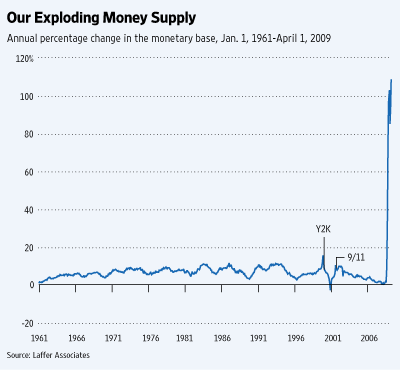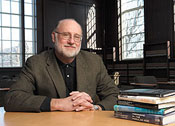(p. A15) . . . beyond amelioration and providing the judicial (or in the case of the FDIC, quasi-judicial) procedures for reorganization, there is little more that the government can do to accelerate the unwinding and renewal necessary to put the economy back on an even keel.
The process involves a sequence of negotiations and experiments that cannot be truncated by throwing in more resources. As Frederick Brooks wrote in his celebrated book on software development, “The Mythical Man-Month: Essays on Software Engineering”: “When a task cannot be partitioned because of sequential constraints, the application of more effort has no effect on the schedule. The bearing of a child takes nine months, no matter how many women are assigned.” “Brooks’s Law” suggests that increasing the size of software teams may delay development.
The wide variety of problems and circumstances in an economic downturn precludes the effective use of a single solution. And the federal government doesn’t have the capacity to determine adjustments on a case-by-case basis. The late Nobel Laureate Friedrich Hayek taught that the “man on the spot” with the appropriate local knowledge was much more capable of making good investment decisions than a central planner.
. . .
Suppose that, when the financial crisis broke two years ago, our leaders had shown a Churchillian steadfastness and allowed the normal realignment to play out under a predictable judicial and regulatory regime. The prices of stocks, bank debt and houses would still have crumbled and unemployment risen. Although recovery wouldn’t have been immediate, we’d at least have progress, instead of a sullen paralysis and futile efforts to turn the clock back.
More loans would have been renegotiated and foreclosed properties auctioned off. The FDIC would already be engaged in finding a good home for the loans and deposits of a megabank or two. That agency, now operating with about one-third the staff it had in the 1980s, could also have used some of the bailout money that helped pay for bonuses at AIG and its counterparties to recruit, train and retain more employees.
Best of all, more entrepreneurs and innovators, who capitalize on the opportunities to be found in the midst of turmoil, could have been building the foundations of a prosperous future.
For the full commentary, see:
Amar Bhidé. “You Can’t Rush a Recovery; While small business struggles, Goldman Sachs was protected from its AIG mistakes.” The Wall Street Journal (Thurs., APRIL 9, 2009): A15.
(Note: ellipsis added.)







